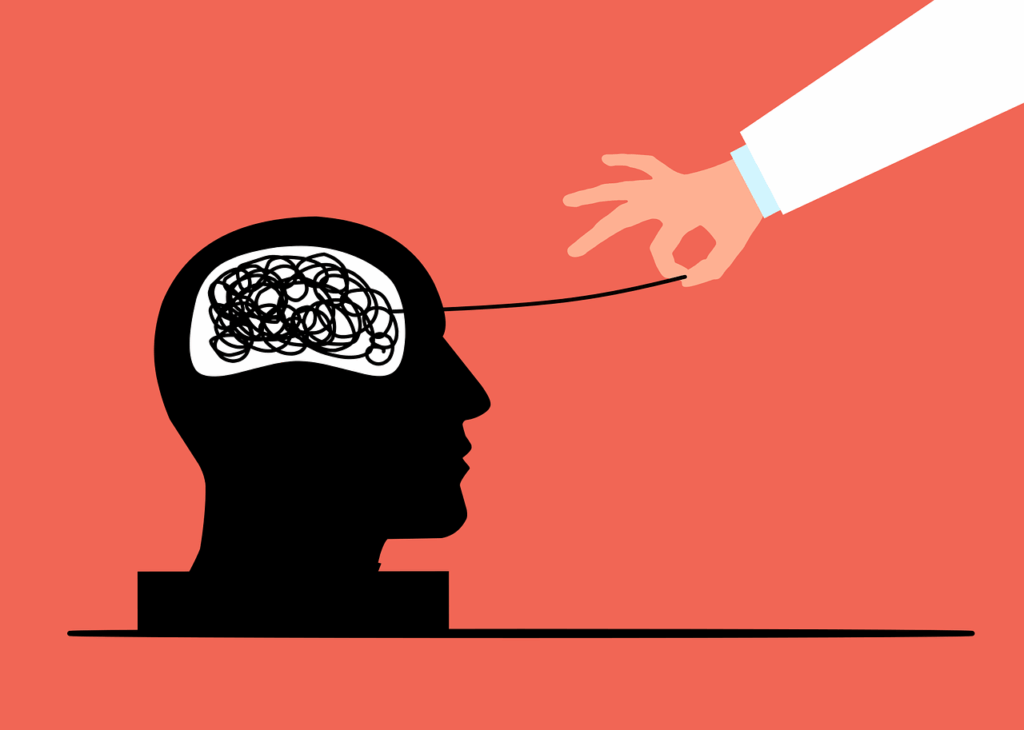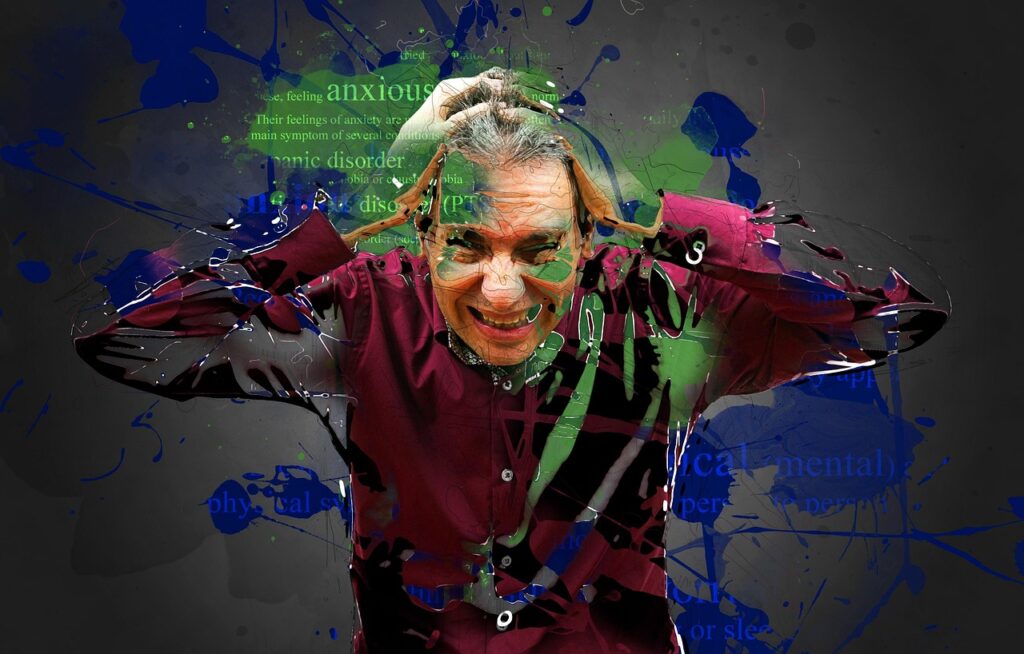
Introduction
Not long ago, Charlotte mayor Vi Lyles put it plainly: “you cannot arrest your way to better mental health.” The line sticks because it names a hard truth—arrests can stop harm in the moment, but they do not treat the illness that often lies beneath. At the same time, communities cannot ignore the need to arrest people who break the law or pose an immediate danger. The real challenge is doing both well: separating who needs treatment and support from who must be removed to protect others, and knowing when a person needs both. That tension sits at the center of America’s struggle with mental health, violence, and crime.
In the pages that follow, this post traces the links between mental health and violence, and the civil rights changes that reshaped commitment laws. It compares how liberal and conservative strategies have performed, examines what we know about school violence, and highlights the strongest evidence behind today’s leading solutions. The goal is simple: a clear, factual guide to what works, what doesn’t, and what deserves a closer look.

Mental Health and Its Connection to Violence
The relationship between mental health and violence is complex. Contrary to public perception, most people with mental illness are not violent. The U.S. Department of Health and Human Services notes that only about 3–5% of violent acts can be attributed to individuals with serious mental illness. However, individuals with untreated mental illness are at an elevated risk of harming themselves or others under certain circumstances (HHS, 2022).
Self-harm is a significant concern. According to the CDC, suicide is the 11th leading cause of death in the United States, with nearly 50,000 deaths in 2022 alone (CDC, 2023). This underscores the reality that untreated mental illness often turns inward rather than outward. Yet, highly publicized acts of violence—including school shootings—have kept the conversation focused on mental illness as a potential driver of aggression.

What the broader evidence shows. Meta-analyses and large cohort studies find that some severe mental illnesses are associated with a modestly elevated relative risk of violence, but most of that excess risk is mediated by co‑occurring substance use disorders and common risk factors (youth, prior violence, social disadvantage). In a landmark population study from Sweden, individuals with schizophrenia had higher odds of a violent offense than matched controls, yet the difference narrowed substantially after accounting for substance misuse, suggesting that substance use—not diagnosis alone—drives much of the risk (Fazel et al., JAMA 2009). A systematic review and meta‑analysis the same year reached similar conclusions, emphasizing that co‑occurring substance use largely explains the association (Fazel et al., PLoS Medicine 2009). Findings from the MacArthur Violence Risk Assessment Study likewise showed that, among recently discharged psychiatric patients, rates of community violence were comparable to neighborhood controls in the absence of substance misuse, and that specific symptoms (e.g., delusions) were poor predictors of violence compared with behavioral history and substance use (Steadman et al., 1998; Ullrich & Coid, 2014; Yang et al., 2012).
Victimization matters. People living with serious mental illness face elevated risks of being victims of crime. A large study by Teplin and colleagues found that adults with serious mental illness experienced substantially higher rates of criminal victimization than the general population, underscoring that this group is more often victimized than violent and that trauma exposure can further worsen symptoms and instability (Teplin et al., 2005).
Treatment and continuity of care reduce risk. Evidence from registry studies indicates that effective treatment and sustained follow‑up can reduce violent outcomes for high‑risk patients. For example, national registry analyses have linked periods on antipsychotics and mood stabilizers to lower rates of violent offending, consistent with the broader literature that symptom stabilization and reduced substance use lower risk (Fazel et al., The Lancet, 2014).
The Civil Rights Movement and Commitment Laws
The civil rights movement of the 1960s reshaped the landscape of mental health law in profound ways. Before this era, it was relatively easy for families, communities, or authorities to commit individuals to state hospitals or asylums, often with little oversight. Many of these institutions were overcrowded, underfunded, and rife with abuse, with patients sometimes confined for decades without meaningful review. Civil rights activism, along with broader social movements emphasizing individual freedoms and human dignity, brought increasing scrutiny to these practices.
A turning point came with the Community Mental Health Act of 1963, signed by President John F. Kennedy. This legislation sought to move away from large institutions toward community-based treatment. While the intent was progressive—focusing on rehabilitation, outpatient services, and reintegration into society—the infrastructure for community-based care was never fully funded or implemented at the scale needed.

In the judicial arena, cases such as O’Connor v. Donaldson (1975) further limited the government’s ability to commit individuals involuntarily. The Supreme Court ruled that a non-dangerous person with mental illness who could survive safely in freedom could not be confined indefinitely. This decision underscored the principle of personal liberty but also made it significantly harder to intervene in cases where someone’s mental illness posed risks that were difficult to prove in legal terms.
The pros of these changes include safeguarding individual rights, preventing unnecessary confinement, and reducing the abuses that were once common in psychiatric institutions. People gained greater autonomy and protection from being institutionalized without due process. The cons, however, include the reality that many individuals with severe mental illness who cannot recognize their own need for care fall through the cracks. Families often find themselves powerless to help loved ones in crisis, and law enforcement officers are left managing situations that mental health professionals are better suited to handle. These dynamics have contributed to cycles of homelessness, incarceration, and untreated illness that remain pressing concerns today.
Liberal and Conservative Approaches to Mental Health and Violence
Different political philosophies shape how communities respond to mental health challenges. Liberal-led cities and states often emphasize community-based treatment, harm reduction, and diversion programs. For example, initiatives like Charlotte’s “Alternatives to Violence” program focus on intervention and prevention rather than punitive measures. Evaluations of similar programs in cities such as New York and Los Angeles show some success in reducing repeat offending and improving access to treatment, though critics argue these approaches may not always adequately protect the public from violent offenders.
Conservative-led areas frequently prioritize public safety through stronger law enforcement measures, sometimes coupled with specialized mental health courts and jail diversion programs. States like Texas have implemented Crisis Intervention Teams (CITs) within police departments to better handle mental health crises. Evaluations of these programs suggest improved outcomes for individuals in crisis and reduced use of force, though access to long-term treatment often remains limited.

No approach has been universally successful. Both sides demonstrate strengths—treatment access on one hand, public safety on the other—yet both struggle to balance these goals effectively. That said, measurable progress has emerged in some areas. Evaluations of liberal-led community programs, such as New York City’s supportive housing initiatives, have demonstrated reductions in homelessness and psychiatric hospitalizations among participants, though impacts on violent crime are less clear. On the conservative side, studies of Crisis Intervention Teams and mental health courts in states like Texas and Ohio show reduced repeat arrests and better outcomes in crisis response, though these benefits tend to be localized and dependent on consistent funding. Overall, neither approach consistently outperforms the other across all measures, but targeted, well-funded programs on both sides provide evidence that success is possible when treatment and safety are integrated effectively.
Legislation and Policy Responses
Legislative approaches to mental health vary widely:
Liberal legislation has often focused on funding community health centers, increasing Medicaid access, and expanding behavioral health services. For instance, the Affordable Care Act mandated mental health coverage as part of essential benefits, increasing insurance access for millions (HHS, 2010). Critics point out, however, that while access expanded, shortages in mental health professionals still limit effectiveness.

Conservative legislation frequently emphasizes integrating mental health into criminal justice responses. Some states have passed laws funding jail-based treatment programs or requiring law enforcement to receive specialized crisis training. These measures improve crisis response but are reactive, addressing individuals after they enter the justice system rather than preventing crises in the first place.
Both strategies contribute important tools, but neither fully resolves the crisis.
Mental Health and School Violence
School shootings highlight the most tragic intersection of mental health and violence. What the strongest empirical studies show is nuanced. In the U.S. Secret Service’s analysis of 41 incidents between 2008 and 2017, 91% of attackers displayed psychological, behavioral, or developmental symptoms beforehand. Within that group, 63% showed depressive symptoms, about 60–63% had suicidal thoughts or gestures, and 40% had a documented mental health diagnosis prior to the attack. Approximately half (54%) had received some form of mental health treatment before the attack. These figures underscore that warning signs are frequently observable even when a formal diagnosis is absent.
A separate question often raised is whether medications are involved. A peer‑reviewed review of educational shootings from 2000 to 2017 found that most identified shooters were not previously treated with psychotropic medications, and even when medications were present, there was no evidence of a causal association with perpetrating a shooting. Official threat‑assessment reports similarly focus on behavioral warning signs and stressors rather than medications as predictors.

Pre‑attack patterns are also detectable in other research. An FBI study of active shooters between 2000 and 2013 verified that only around 25% had any prior mental‑illness diagnosis, yet the majority exhibited four to five observable concerning behaviors over time, such as leakage of violent intent or persistent interpersonal conflicts. These findings reinforce the value of behavioral threat assessment in schools. NTAC reports further note that most student attackers experienced multiple stressors such as family conflict, bullying, or academic discipline, and that many communicated intent or exhibited violent fixations in advance.
Taken together, the evidence indicates that mental health challenges often play a role in school shootings, particularly depression, suicidality, and overwhelming stress. Equally, there is no reliable evidence, as some have proposed, that psychiatric medications cause these violent attacks. Prevention hinges on early, behavior-based intervention, robust student mental-health services, and coordinated follow-through between schools, families, clinicians, and law enforcement.
Proposed Solutions: Ideas, Pros, and Cons
Several solutions have been proposed to address America’s mental health crisis:
- Expanding Community Mental Health Services
- Pros: Accessible, preventive care; reduces ER and jail admissions.
- Cons: Requires sustained funding and a larger mental health workforce, which is already in short supply.
- Increasing Involuntary Commitment Powers
- Pros: Can remove dangerous individuals from situations before violence occurs.
- Cons: Risks violating civil liberties and returning to abusive institutional practices.
- Crisis Intervention Teams and Co-Responder Models
- Pros: Improves safety for both individuals in crisis and officers; reduces unnecessary arrests.
- Cons: Effectiveness depends on local training, resources, and available follow-up treatment.
- Red Flag Laws and Firearm Restrictions
- Pros: Can prevent individuals in crisis from accessing weapons during high-risk periods.
- Cons: Critics argue these laws may infringe on constitutional rights and are difficult to enforce fairly.
- School-Based Mental Health Programs
- Pros: Provides early support; can identify at-risk students before crises escalate.
- Cons: Requires funding and trained personnel that many districts lack.
Conclusion
Mayor Vi Lyles was right to point out that arrests alone will not solve America’s mental health crisis. At the same time, law enforcement remains a necessary tool when crime and danger are present. The challenge is creating a system where treatment, prevention, and public safety are balanced effectively. Both liberal and conservative strategies offer important contributions but fall short when pursued in isolation.
The truth is that no single blueprint will fix the mental health crisis. Imagine the problem as a bridge: on one side stands public safety, on the other stands treatment and compassion. Neither side can cross without the other; if one side collapses, the whole structure fails. Only when communities weave together early intervention, accessible treatment, respect for civil liberties, and strong safeguards for public safety will that bridge hold. America’s path forward lies not in choosing one side over the other, but in building a shared foundation sturdy enough to carry us all across the turbulent waters of mental health, homelessness, and violence.
For Homelessness and Mental Health Click Here
Bibliography
- Centers for Disease Control and Prevention. “Suicide Data and Statistics.” CDC, 2023. https://www.cdc.gov/suicide/suicide-data-statistics.html
- Centers for Disease Control and Prevention. “Provisional Drug Overdose Death Counts.” CDC NVSS, updated 2025. https://www.cdc.gov/nchs/nvss/vsrr/drug-overdose-data.htm
- Department of Health and Human Services. “Mental Health Myths and Facts.” HHS, 2022. https://www.hhs.gov/answers/mental-health-and-substance-abuse/mental-health-myths-and-facts/index.html
- Department of Housing and Urban Development. 2023 Annual Homeless Assessment Report (AHAR), Part 1. HUD, 2023. https://www.huduser.gov/portal/sites/default/files/pdf/2023-AHAR-Part-1.pdf
- Department of Housing and Urban Development. Worst Case Housing Needs: 2023 Report to Congress. HUD, 2023. https://www.huduser.gov/portal/portal/sites/default/files/pdf/Worst-Case-Housing-Needs-2023.pdf
- Federal Bureau of Investigation. A Study of the Pre‑Attack Behaviors of Active Shooters in the United States Between 2000–2013. FBI, 2018. https://www.fbi.gov/file-repository/pre-attack-behaviors-of-active-shooters-in-us-2000-2013.pdf
- GAO. Homelessness: Better HUD Oversight of Data Collection Could Improve Estimates of Homelessness. GAO‑20‑433, 2020. https://www.gao.gov/products/gao-20-433
- Gilbert, Andrew R., et al. “Reductions in Arrest Under Assisted Outpatient Treatment in New York.” Psychiatric Services 61, no. 10 (2010): 996–999. https://pubmed.ncbi.nlm.nih.gov/20889637/
- Hall, Ryan C. W., et al. “The Myth of School Shooters and Psychotropic Medications.” Behavioral Sciences & the Law 37, no. 5 (2019): 540–558. https://pubmed.ncbi.nlm.nih.gov/31513302/
- Lachaud, Jean, et al. “The Effect of a Housing First Intervention on Acute Health Care Utilization among Homeless Adults with Mental Illness.” Canadian Journal of Psychiatry 66, no. 11 (2021): 1035–1046. https://pmc.ncbi.nlm.nih.gov/articles/PMC8382791/
- Larimer, Mary E., et al. “Health Care and Public Service Use and Costs Before and After Provision of Housing for Chronically Homeless Persons With Severe Alcohol Problems.” JAMA 301, no. 13 (2009): 1349–1357. https://jamanetwork.com/journals/jama/fullarticle/183666
- Los Angeles County Department of Public Health, Center for Health Impact Evaluation. Mortality Rates and Causes of Death Among People Experiencing Homelessness in Los Angeles County. 2025. https://publichealth.lacounty.gov/chie/reports/Homeless_Mortality_Report_2025.pdf
- MacArthur Violence Risk Assessment Study (selected publications):
• Steadman, Henry J., et al. “Violence by People Discharged From Acute Psychiatric Inpatient Facilities and by Others in the Same Neighborhoods.” Archives of General Psychiatry 55, no. 5 (1998): 393–401. https://jamanetwork.com/journals/jamapsychiatry/fullarticle/203874
• Yang, S., et al. “Psychiatric Symptoms and Alcohol Use in Community Violence.” Psychiatry 75, no. 1 (2012): 50–64. https://pmc.ncbi.nlm.nih.gov/articles/PMC3806977/
• Ullrich, S., and J. Coid. “New Findings From the MacArthur Violence Risk Assessment Study: A Synthesis.” Schizophrenia Bulletin 40, no. 5 (2014): 1174–1182. https://academic.oup.com/schizophreniabulletin/article/40/5/1174/1924221 - Manhattan Institute. Eide, Stephen. Housing First and Homelessness: The Rhetoric and the Reality. 2020. https://media4.manhattan-institute.org/sites/default/files/housing-first-and-homelessness-SE.pdf
- Manhattan Institute. Eide, Stephen. The Future of Housing for the Homeless. 2025. https://media4.manhattan-institute.org/wp-content/uploads/the-future-of-housing-for-the-homeless.pdf
- Medicaid/CMCS. Opportunities to Address Mental Health (MH) and Substance Use Disorder (SUD) Needs of Persons Experiencing Homelessness. May 10, 2024. https://www.medicaid.gov/federal-policy-guidance/downloads/mh-sud-med-chip-enrol-expncg-hmles.pdf
- Metzl, Jonathan M., and Kenneth T. MacLeish. “Mental Illness, Mass Shootings, and the Politics of American Firearms.” American Journal of Public Health 105, no. 2 (2015): 240–249. https://www.ncbi.nlm.nih.gov/pmc/articles/PMC4318286/
- National Academies of Sciences, Engineering, and Medicine. Permanent Supportive Housing: Evaluating the Evidence for Improving Health Outcomes Among People Experiencing Chronic Homelessness. NASEM, 2018. https://nap.nationalacademies.org/catalog/25133/permanent-supportive-housing-evaluating-the-evidence-for-improving-health-outcomes
- National Academies of Sciences, Engineering, and Medicine. Permanent Supportive Housing: Report Highlights. 2018. https://nap.nationalacademies.org/resource/25133/Permanent%20Supportive%20Housing-ReportHighlights.pdf
- National Threat Assessment Center. Protecting America’s Schools: A U.S. Secret Service Analysis of Targeted School Violence. NTAC, 2019. https://www.secretservice.gov/sites/default/files/2020-04/Protecting_Americas_Schools.pdf
- National Threat Assessment Center. Averting Targeted School Violence: A U.S. Secret Service Analysis of Plots Against Schools. NTAC, 2021. https://www.secretservice.gov/sites/default/files/reports/2021-03/USSS%20Averting%20Targeted%20School%20Violence.2021.03.pdf
- New York State Office of Mental Health. Kendra’s Law: Final Report on the Status of Assisted Outpatient Treatment. 2005. https://my.omh.ny.gov/analyticsRes1/files/aot/AOTFinal2005.pdf
- Peng, Young, et al. “Housing First and Other Permanent Supportive Housing Programs: A Community Guide Systematic Review.” American Journal of Preventive Medicine 59, no. 3 (2020): e15–e26. https://pmc.ncbi.nlm.nih.gov/articles/PMC8513528/
- Swanson, Jeffrey W., et al. “Arrest Outcomes Associated With Outpatient Commitment in New York State.” Psychiatric Services 62, no. 5 (2011): 504–508. https://pmc.ncbi.nlm.nih.gov/articles/PMC5826718/
- Teplin, Linda A., et al. “Crime Victimization in Adults With Severe Mental Illness.” Archives of General Psychiatry 62, no. 8 (2005): 911–921. https://pmc.ncbi.nlm.nih.gov/articles/PMC1389236/
- Tsemberis, Sam, et al. “Pathways to Housing: Supported Housing for Street-Dwelling Homeless Individuals with Psychiatric Disabilities.” Psychiatric Services 51, no. 4 (2000): 487–493.
- Urban Institute. Breaking the Homelessness–Jail Cycle with Housing First: Results from the Denver Supportive Housing Social Impact Bond Initiative. 2021. https://www.urban.org/sites/default/files/publication/104497/breaking-the-homelessness-jail-cycle-through-a-housing-first-approach_0.pdf
- Urban Institute. Costs and Offsets of Providing Supportive Housing to Break the Homelessness–Jail Cycle. 2021. https://www.urban.org/sites/default/files/publication/104499/costs-and-offsets-of-providing-supportive-housing-to-break-the-homelessness-jail-cycle_0.pdf
- Fazel, Seena, et al. “Schizophrenia, Substance Abuse, and Violent Crime.” JAMA 301, no. 19 (2009): 2016–2023. https://jamanetwork.com/journals/jama/fullarticle/183929
- Fazel, Seena, et al. “Schizophrenia and Violence: Systematic Review and Meta‑Analysis.” PLoS Medicine 6, no. 8 (2009): e1000120. https://journals.plos.org/plosmedicine/article/info%3Adoi%2F10.1371%2Fjournal.pmed.1000120
- Fazel, Seena, et al. “Antipsychotics, Mood Stabilisers, and Risk of Violent Crime.” The Lancet 384, no. 9949 (2014): 1206–1214. (See authors’ reply referencing main article: https://www.thelancet.com/pdfs/journals/lancet/PIIS0140-6736%2814%2962334-5.pdf)
- Stuart, Heather. “Violence and Mental Illness: An Overview.” World Psychiatry 2, no. 2 (2003): 121–124. https://pmc.ncbi.nlm.nih.gov/articles/PMC1525086/




